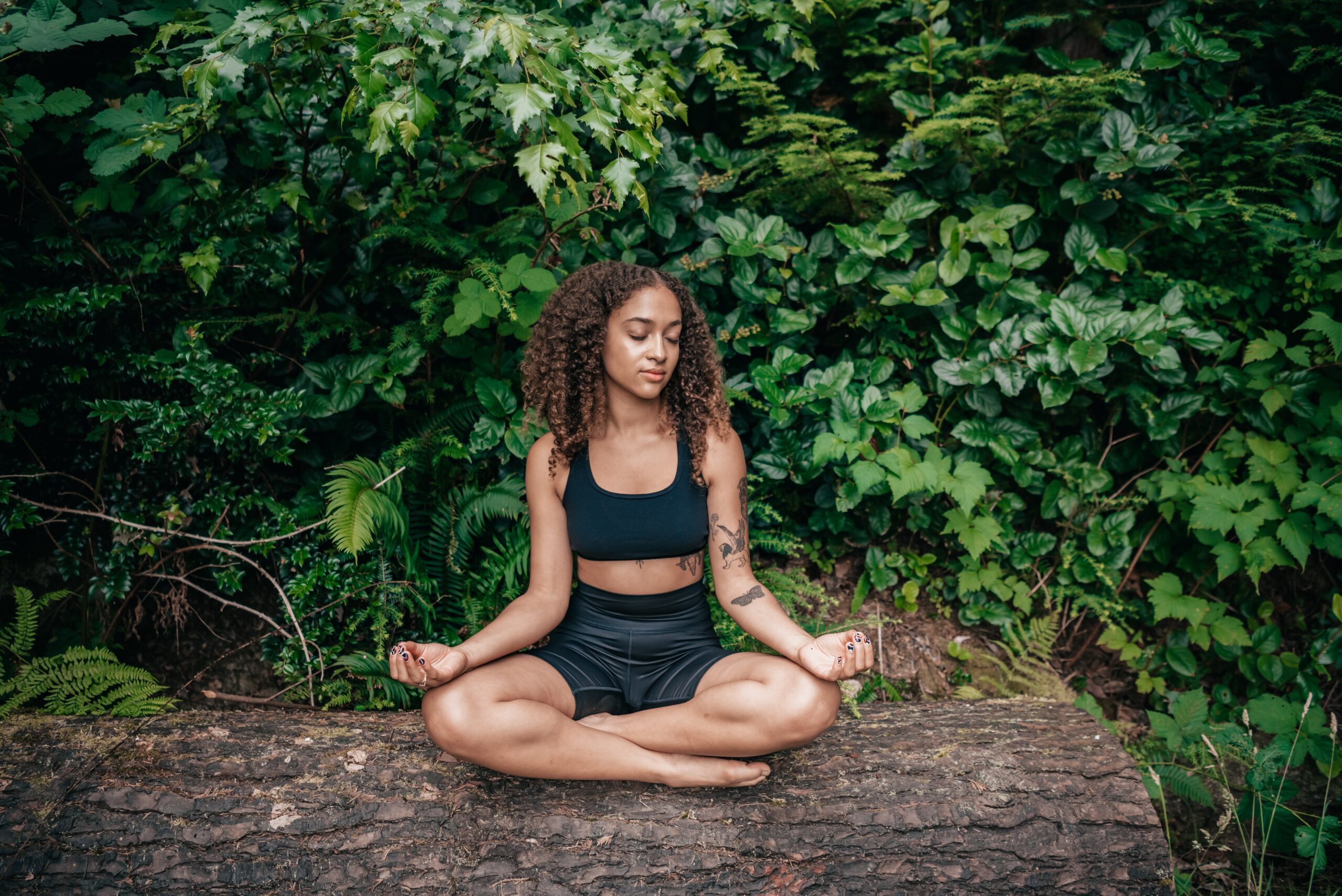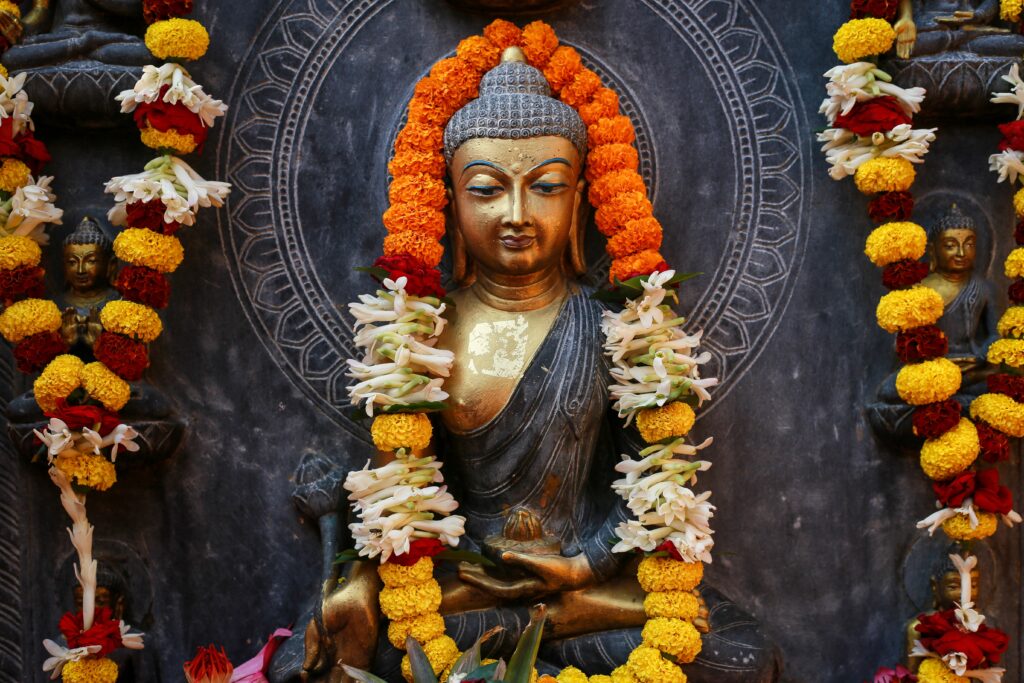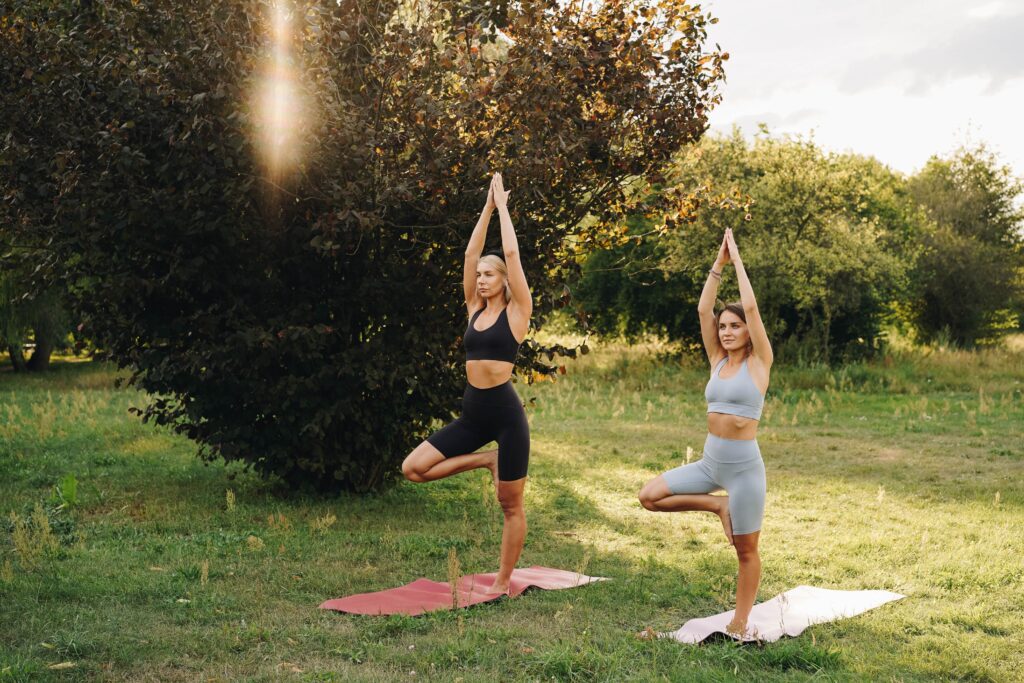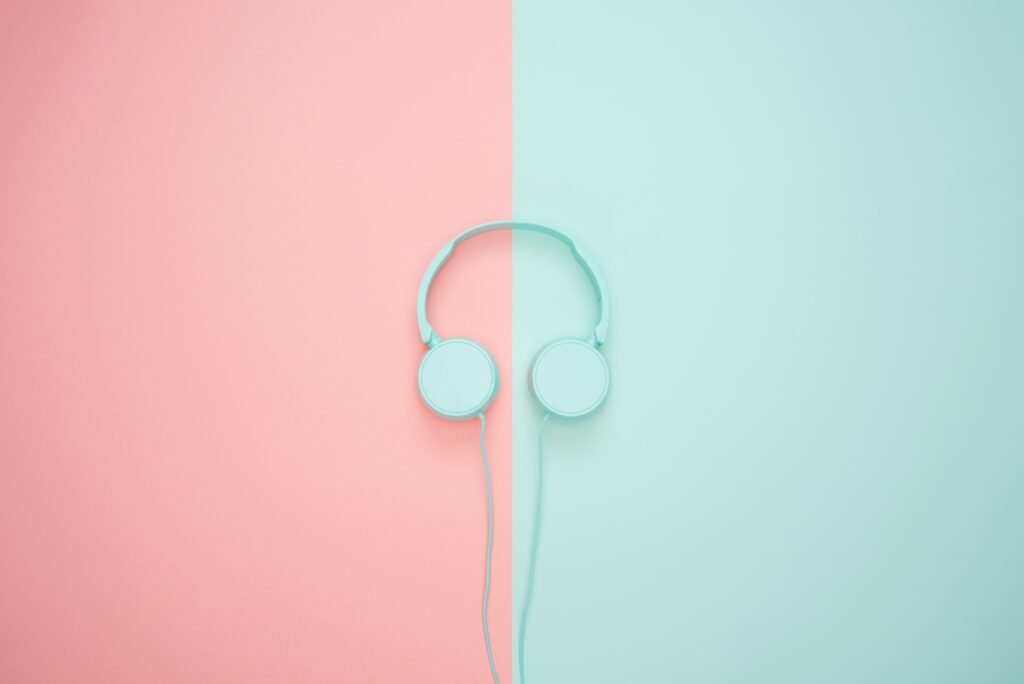
We are each living through a time frequently, and now glibly, described as ‘unprecedented’. Our world is in an exceptional state of flux as a result of the Covid-19 pandemic. Constant lockdowns have forced us to transform how we live, work and communicate. For many, the instability of the past year has proved overwhelming and anxiety-inducing. With restrictions in place in most countries, simple pleasures like walks in nature are cherished like never before, used as a means to cope with the uncertainty of what lays ahead. Now more than ever it feels imperative to protect our inner world. Yoga and meditation have long been considered go-to practices for those in search of a sense of calm and peace within. But what is yoga and what does it mean to meditate? And why should each of us make a little more room for these ancient practices in our lives?
Yoga is the spiritual and ascetic discipline of mindful movement, breath control and the adoption of specific bodily postures. It is widely practised as a form of exercise and relaxation. Meditation then, is the conscious attempt to focus attention in a non-analytical way and an attempt not to dwell on discursive, ruminating thought (Shapiro, 1982). Used together, yoga and meditation can have incredible affects on the mind, body and soul. In essence, both yoga and mediation are focus-orientated practices, both of which have been honoured in many cultural traditions for centuries. The earliest documented records of meditation appear in Indian Vedas teachings dating back to 1500 BC but is understood to have originated in India circa 5000-3500 BC. Outside of India, evidence of yoga and meditation can be found in the early histories of Taoist China, Buddhist Japan and Buddhist Tibet. The practices permeated into western culture in the 18th century as yoga and translations of ancient teachings such as the Bhagavad Gita reached Western scholars. Its popularity in Western society has grown substantially since then, right through to the present day with modern advocates of yoga and meditation like Adriene Mishler (Yoga with Adriene), Dr. Deepak Chopra and Whim Hoff further pushing the rituals into the mainstream. Yoga and meditation at their core however are ancient practices which have transcended cultures and generations. Ancient yogis knew little of physiology yet still placed great emphasis on the value of studying the breath and engaging in meditative practices due to the bountiful physical, psychological, emotional and spiritual benefits their practitioners experienced.
Modern researchers have studied these benefits and have proven many to be true. Physically, of course, yoga is of great benefit to us. Any activity which gets our bodies moving and our blood pumping is immensely rewarding, and yoga does just that. Yoga flows increase strength and flexibility, improve posture and balance, help with back pain relief and arthritis symptoms. One does not need to be overly athletic to experience these benefits. Any practice, no matter how short or gentle, will have incredible physical effects on the body. One of the most unique of these benefits is the effect yoga has not on our muscles or joints, but on a lesser-known yet integral part of our anatomical make-up – the fascia. Fascia is a connective tissue; one huge sheet which wraps around our muscles, bones and nerves, connecting each organ to our muscles, joints and bones. It is made up of collagen and 70% water. Current scientific research understands that fascia responds to both physical and emotional trauma, with traumatised fascia appearing more dehydrated than its healthy counterpart. Fascia absorbs emotional trauma and solidifies it into the body, causing us to hold tension and stress in areas we are likely unaware of. Yoga (especially yin yoga) targets the fascia in such a way that it stretches and rehydrates this integral connective tissue, releasing any emotional residue which has become entangled. This is why we may cry or feel an overwhelming yet cathartic sense of anger or frustration in a yoga class, particularly during a hip opening pose. This release is merely an old emotion from a past experience finally leaving our bodies. We often feel so much lighter following a good yoga session. Not only have our bodies endured a rewarding physical workout but they have also been freed of some of the lingering physical effect of emotional trauma.

It has been proven that those with a yoga or meditation practice often feel a stronger sense of calm and peace within than those who do not. This feeling is not merely psychological. Studies show that meditation and the breath work practices used in yoga soothes our physical anatomy. The human body contains two nervous systems; the parasympathetic and the sympathetic nervous system. Yoga activates the parasympathetic nervous system, which regulates rest, causes muscle relaxation, slows breathing, lowers heart rate and lowers blood pressure. Concurrently, the sympathetic nervous system, which increases heart rate and stimulates the body’s fight or flight response, is deactivated. This leads to lower levels of stress hormones such as epinephrine (adrenaline) and cortisol being released – up to 50% in some cases. Those with a regular yoga or meditation practice will therefore have greater heart health, lower blood pressure, reduced muscle tension and a greater ability to remain calm in distressing situations, as the parasympathetic system can be mindfully activated instead of the sympathetic nervous system taking control.
Yoga has an equally distinctly positive effect on psychological conditions. As noted in Harvard Health Publishing, researchers from Johns Hopkins University in Baltimore examined 19,000 published studies on the effects of yoga and meditation and consequently found that at large, mindful meditation eased mental stress caused by conditions such as anxiety, depression and fibromyalgia. Meditative yoga practices like Kundalini yoga are effective at treating General Anxiety Disorder, to almost the same degree as Cognitive Behavioural Therapy. This is because intensive meditative practices literally change the brain. It has a positive effect on areas in the brain such as the insula and the medial prefrontal cortex which are responsible for physiological self-regulation. Those who meditate experience a heightened sense of self-awareness. This grants practitioners greater agency over their emotions, consequently allowing them to react to thoughts and memories in a more measured way. As such, yoga can be used as a powerful tool when attempting to overcome physical or emotional trauma as practitioners are better equipped to deal with intrusive thoughts.

Those with a yoga practice also experience an array of emotional and spiritual benefits. It is thought that through mindful movement and meditation, one tends to grow more compassionate towards others. This is a lesser explored area at present but preliminary studies suggest that those accustomed to yoga or mindfulness practices show greater instances of prosocial behaviour. Results illustrate a decrease in aggressive behaviour, reduced displays of racial and age bias and greater displays of generosity after only three weeks of yoga and meditation. Fascinatingly, Dr Lucy Weir studies yoga alongside the climate crises, exploring how yoga philosophy as practice can play a role in understanding the ecological emergency. The amalgamation of yoga and philosophy is excellently illustrated in her book, ‘Love is Green: Compassion as responsibility in the ecological emergency’. As such, yoga and meditation may not only benefit the individual but serve to create a more empathetic society as a whole.
Perhaps most importantly, yoga and meditation successfully teach us to be present and at peace with who and where we are in life, irrespective of external factors that may otherwise prove distracting or cause anxious thoughts to proliferate. They restore order to a busy, chaotic mind and grant the opportunity to cultivate a clearer sense of self and self-acceptance. Focusing on body and breath during a yoga flow dramatically increases the posterior cingulate cortex’s ‘grey matter concentration’, which essentially means the area of the brain responsible for focusing on the present moment. This strengthens our ability to appreciate the present, both on and off the mat. Yoga guru Mark Stephens describes this benefit as ‘an integral part of the entire path of discovering, loving, healing and transforming the totality of one’s being’. Yoga and meditation are ultimately tools which allow us to extract the most out of ourselves and of life.
Both yoga and meditation are essentially accessible to anyone, anytime, anywhere. With thanks to the internet, reams of information on these topics as well as guided videos led by experienced teachers can be accessed quickly and for free. Increased scholarly attention blended with advances in technology mean it has perhaps never been easier to begin a yoga practice. YouTube features a yoga video for every mood and level. Meditation apps like ‘Headspace’ offer scientifically-supported, practical and accessible ways to incorporate meditation into one’s daily routine. Since the start of the pandemic, courses offered by Headspace have seen a 1,000% spike in users. While this has been linked to increased anxiety induced by Covid-19, this increase can and should be considered a positive thing. We are all likely fed up of hearing about how the global lockdown has forced us to slow down and rethink how we operate. This has led to a collective realisation however that this change of pace is perhaps not all bad. Instead of operating solely in a hyper-active auto-pilot mode, lockdown has allowed time for mindful introspection and for practices like yoga and meditation to be explored.
The benefits of yoga are vast-ranging and extensive, improving almost all aspects of the human experience. I would urge anyone and everyone to indulge in a simple act of svadhyaya (self-study) and explore for yourself the physical, psychological, emotional and spiritual value of this ancient practice. A little yoga and meditation should be non-negotiable features of all our daily routines.

This article was written by Emma Durack. Emma is a 25 year-old yoga teacher from Donegal, living in Dublin. She started doing yoga six years ago and completed her 200 hour yoga training in February 2021. Also a postgraduate psychology student, Emma is particularly interested in the science behind yoga and why it makes us feel so good.




